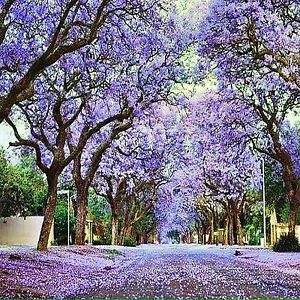
“Only by binding together as a single force will we remain strong and unconquerable.” ― Chris Bradford
In 1996, then First Lady Hillary Rodham Clinton penned a book, “It Takes a Village: And Other Lessons Children Teach Us.” The title of the book was based on an African proverb, “It takes a village to raise a child,” which speaks to the need for entire communities to come together to care for their most vulnerable. Clinton’s book reflected this belief, calling upon Americans to take a more active role in raising their children by enacting social and political reforms and working together to instill a belief system in our young people that reflected the American values that were prevalent at the time.
Today, as I hear horror story after horror story about another vulnerable population — the elderly and those at the end of their lives — I have been reflecting on that African proverb and what it means for America today. Despite our best intentions — our advance directives and POLSTs and pre-hospital DNRs — far too many of us are falling victim to the relentless medicalization of death. Recently, I joined a Facebook group, Slow Medicine, which was founded by Katy Butler, the author of “Knocking on Heaven’s Door, the Path to a Better Way of Death,” and “The Art of Dying Well: A Practical Guide to a Good End of Life.” And after reading many of the posts there, I have been feeling discouraged and angry and even heartbroken that we are still failing to protect frail, dying, elderly people from the kinds of medical interventions that merely extend suffering and do nothing to help them achieve the peaceful death they so clearly want.

Credit: ebay.com
What are we doing wrong? It’s easy to blame doctors or a health care system that is so fragmented that communication fails more often than it works. And it’s apparent that both the “full-speed-ahead” mentality of many physicians and the still too common paternalism of the medical profession is partly to blame. Certainly, patients and families are still routinely coerced into having medical procedures they don’t want by doctors who “know what’s best.” But at the same time, paternalism only works when the patient and/or their surrogates assume a subservient role. Are doctors really such bullies? Or do we, the patients and families, step aside and fail to advocate for what we want because taking responsibility for decision-making and all that entails is just too hard? Or are we beset by doubt and uncertainty because we have never really thought through how we want our lives to end?
My guess is it’s all of the above and more.
There are unavoidable realities that contribute to the problem, of course. One is the fact that we are living longer lives. In 1960, the average life expectancy was 52 years. People aged at home, were cared for at home, and died at home. Today, the average life expectancy is nearly 79. (If you live to 80 you can count on around 10 more years.) And many of our elderly live with one or more chronic conditions that limit their ability to care for themselves. Thus, living at home into “old age” is less and less the norm. As of 2016, 5 percent of all Americans over the age of 65 lived in an assisted living facility or nursing home. But that number jumped to 25 percent of the oldest-old. Only about 50 percent of people over the age of 95 still live at home.
To me, these numbers reflect one of the root causes of our inability to take control of how we die. We have given over our dying — both the people and the process — to institutions and a healthcare system that is impossibly flawed. And while the reasons why this is true are very complex, I believe it’s something we need to fix.
And that’s where “it takes a village” comes in. When communities work together, the results can be miraculous. Here are just a few examples:
In India, where palliative medicine is accessible only to the very rich, Dr. Suresh Kumar, an anesthesiologist in Kerala, founded the Institute of Palliative Medicine. He and his staff organized a community of over 10,000 citizen volunteers to provide care to nearly 2,500 patients a week in their homes. Almost all of the care is free.

Credit: João Medeiros via wikimedia.org
In the United Kingdom, Professor Allan Kellehear and Dr. Julian Abel have developed the Compassionate City Charter, which outlines 13 social changes that assist local communities in developing community-based care models utilizing non-professional caregivers to help dying patients stay in their homes.
And closer to home, Pallium Canada, an Ottawa-based group led by Sharon Carstairs, has launched a major initiative to help citizens work together to provide compassionate, community-based care for the elderly and terminally ill.
Obviously it can be done. All we need is the courage and desire and the will to work together towards meaningful change.
About Kathleen
Each month Kathleen Clohessy, R.N., offers a new perspective on living with a terminal illness. Kathleen comes to SevenPonds with 25 years experience as a registered nurse caring for families and children facing life-threatening illness. She began her career in the Pediatric Intensive Care Unit at Nassau County Medical Center in New York. After relocating to California, she spent 15 years as an R.N. and Assistant Nurse Manager at the Pediatric Oncology & Bone Marrow Transplant Unit at Lucille Salter Packard Children’s Hospital at Stanford. She uses her knowledge and expertise to enlighten our readers about the challenges associated with chronic illness and its effects on family relationships.

 It Takes a Village
It Takes a Village


 How Dare You Die Now!
How Dare You Die Now!
 Debating Medical Aid in Dying
Debating Medical Aid in Dying
 “Help Me, Helen”
“Help Me, Helen”














